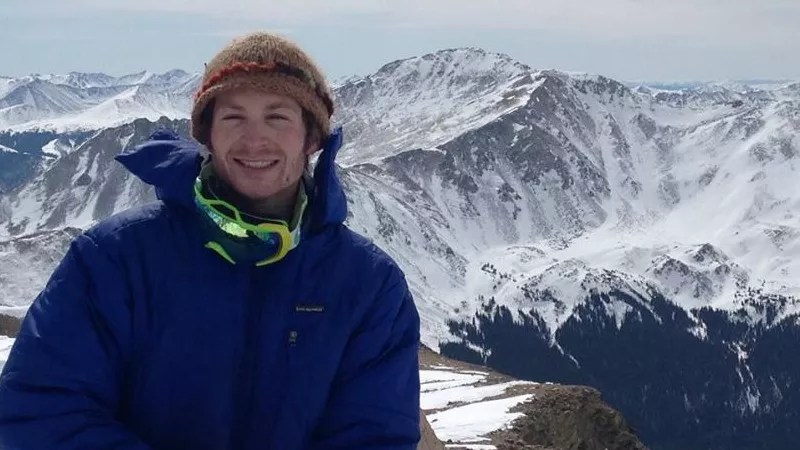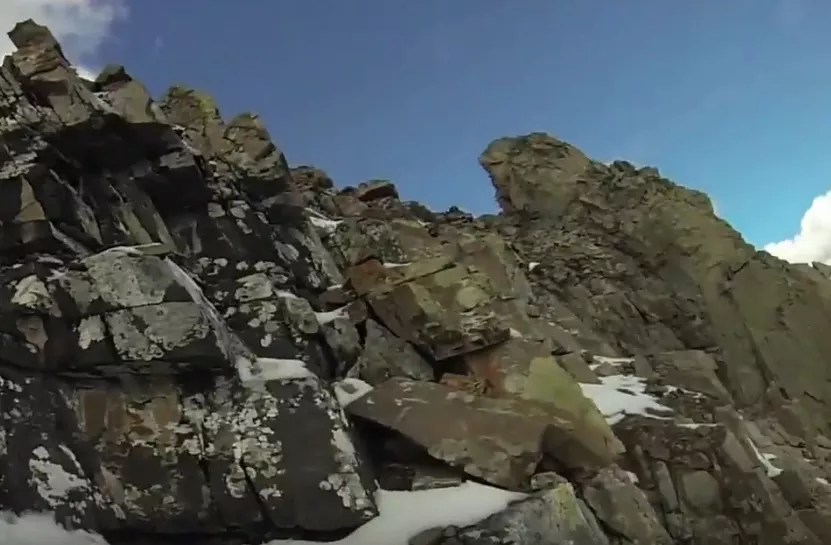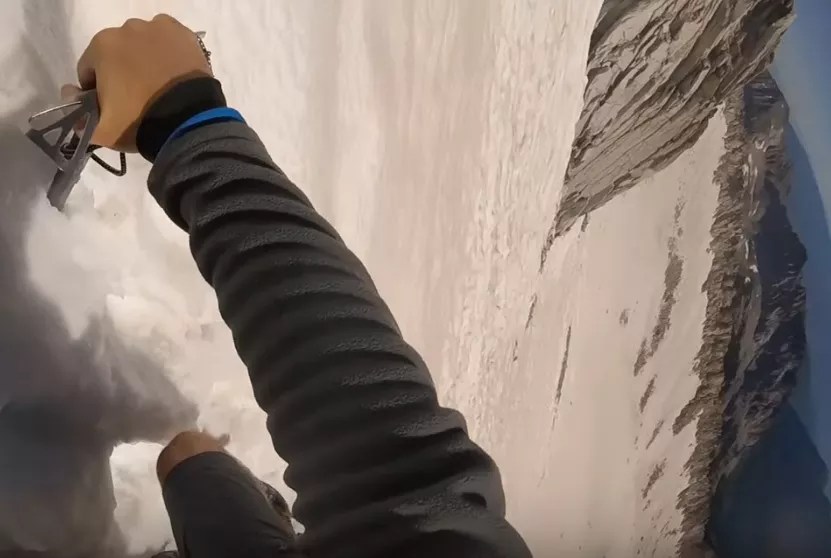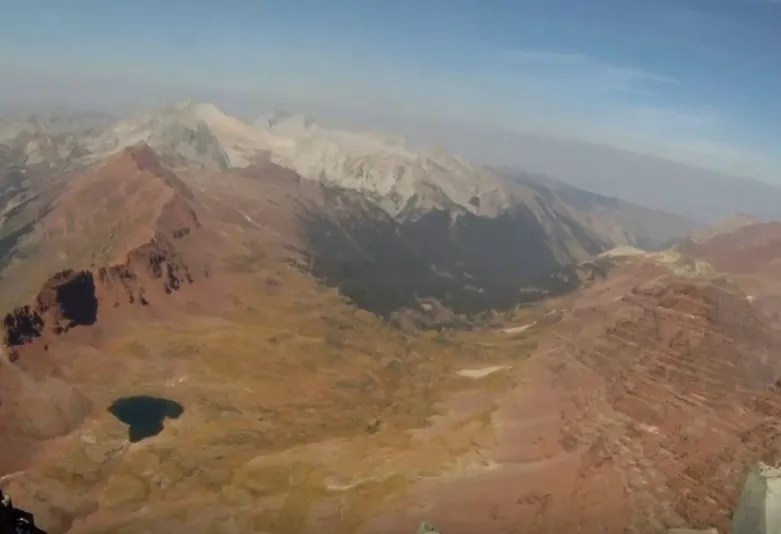

Audio By Carbonatix
On Sunday, August 6, (update) Jeremy Shull, a 35-year-old from Parker, died while climbing the Knife’s Edge portion of Capitol Peak, in the Elk Mountains near Aspen. He’s the second person to perish scaling Capitol Peak in less than a month, following Jake Lord, another Parker resident who suffered a fatal fall there on July 15. And according to Lloyd Athearn, executive director of the Colorado Fourteeners Initiative, data compiled by the organization shows that Capitol Peak and several other Elk Mountains fourteeners are among the riskiest in Colorado.
“Every mountain needs to be approached with caution,” Athearn advises. “But the Elk Mountains are the most notoriously loose and dangerous of all the fourteeners in Colorado. Any of the mountains in the Elk range are significant undertakings: Capitol Peak, Pyramid, Snowmass, and the Maroon Bells in particular. Almost every year, we have a fatality on the Bells.”
Athearn notes that “I did a research effort on behalf of a donor who was interested in these mountains in particular, and I was quite sobered by the number of accidents and the number of fatalities in the Elk Mountains, especially given that very few people climb those mountains.”
The numbers bear out this last observation. Athearn spoke to our Chris Walker last year in regard to a CFI report that attempted to estimate the number of people who hiked fourteeners in Colorado circa 2015, coming up with a total of approximately 260,000. That year, the Sawatch Range fourteeners were the busiest, with 95,000 hikes, followed by the Front Range, with around 72,000 hikes at its fourteeners – and even the Mosquito Range fourteeners notched 33,000 or so hikes. In contrast, only about 7,000 people tackled the Elk Mountains fourteeners, with the most visited of them being Castle Peak, at 3,000 to 5,000 hikers. The others in the range – Maroon Peak, Capitol Peak, Snowmass Mountain and Pyramid Peak – all registered fewer than 1,000 hikes.
Will you step up to support Westword this year?
At Westword, we’re small and scrappy — and we make the most of every dollar from our supporters. Right now, we’re $20,000 away from reaching our December 31 goal of $50,000. If you’ve ever learned something new, stayed informed, or felt more connected because of Westword, now’s the time to give back.
Nonetheless, Athearn notes, “When I was going through news reports and reports from sheriff’s offices and search-and-rescue groups, those were the mountains most likely to have wrong-place-wrong-time handhold breaks, climbers hit by a rock, and those types of accidents. And they’re the kind that are the hardest to mitigate against.”
Athearn admits to being “surprised by the number of accidents and fatalities that occurred on Snowmass Mountain, which isn’t rated as difficult as Capitol Peak or Pyramid Peak or even the Maroon Bells. It was shocking the number of people who got into trouble on the mountain due to loose rock or confusing the wrong descent routes.”
These observations shouldn’t suggest that Athearn thinks the Elk Mountains, or other skyscraping peaks in the state, should be off-limits to all but the most expert climbers, even though Sunday’s death was the fifth at a Colorado fourteener in 2017. He points out that “based on accident/fatality studies I did while at American Alpine Club, the percentage of people who die in climbing-related accidents has dropped rather dramatically as more people are engaging in the sport and are doing so more safely due to better equipment, better knowledge, better communications equipment and more accessible emergency response capabilities. Some inaccurately think that because there appear to be more fatalities in absolute terms, the sport has become more dangerous. In reality, more people are participating in mountaineering and climbing with a reduced risk of getting hurt or killed.”
Still, he adds, “The Elk Mountains are among the least frequently climbed fourteeners in the state, but are disproportionately more likely to be the scene of fatalities due to their more technical nature and their notoriously loose rock. Even within this range, the most popular fourteener [Castle and nearby sub-peak Conundrum] is the least likely to see accidents/fatalities.”
Below, see the Colorado Fourteener Initiative’s rescue and fatality information for Elk Mountains fourteeners over the aforementioned fifteen-year-period, ranked from the lowest to the highest percentage of climber incidents. That’s followed by overall totals for the Elk Mountains fourteeners. Note that the two most recent incidents mean that Capitol Peak has been the setting for six deaths since 2000, and four in the past five years.
Castle/Conundrum Peak:

A winter view from Castle Peak.

Colorado Fourteeners Initiative
Pyramid Peak: Typical terrain on Pyramid Peak. Colorado Fourteeners Initiative Capitol Peak: Climbing Capitol Peak. Colorado Fourteeners Initiative Snowmass Mountain: There was still plenty of snow during this July 2016 climb up Snowmass Mountain. Colorado Fourteeners Initiative Maroon Bells: A summer view from Maroon Peak. Colorado Fourteeners Initiative Elk Mountains totals: Colorado Fourteeners Initiative







